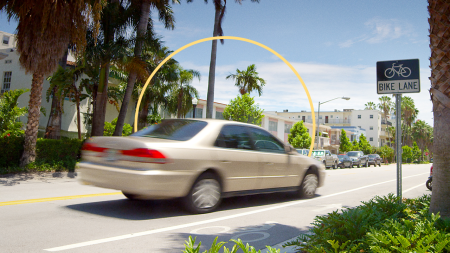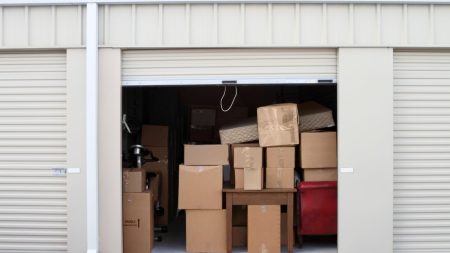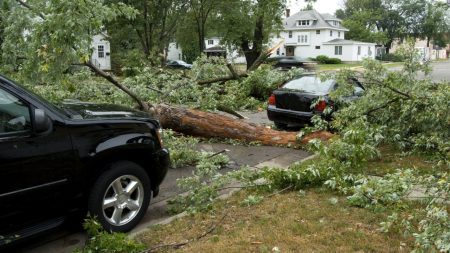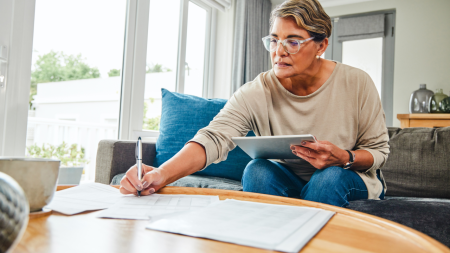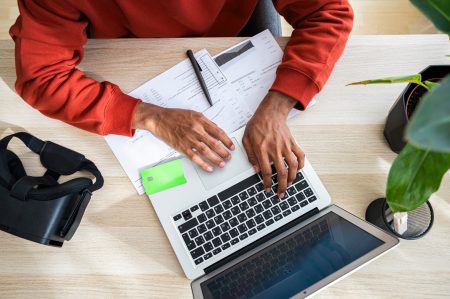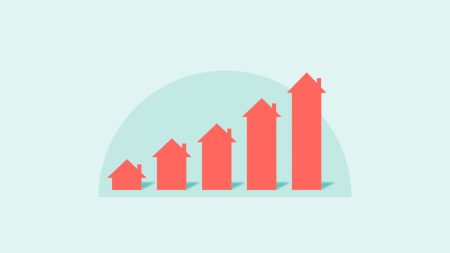Key takeaways
- The cost of homes has skyrocketed, creating affordability issues for prospective buyers.
- Upfront expenses associated with buying a home include the down payment, closing costs and moving costs.
- Ongoing expenses of homeownership, beyond the mortgage payment, include property taxes, insurance and maintenance.
For many prospective buyers, homeownership seems increasingly elusive. In fact, 78 percent of non-homeowners who wish to own a home someday cite some type of affordability challenge, including insufficient income (56 percent), high home prices (47 percent) and the down payment and closing costs (42 percent), according to Bankrate’s 2024 Home Affordability Report.
Even if you are able to, the costs associated with buying a home go beyond the mortgage payment. To determine how much house you can afford, it’s important to factor in additional expenses, such as closing costs, insurance and taxes, before committing to a mortgage. Let’s break down the total cost of buying a home.
Notes: Percentages are of U.S. adults who don’t own a home but have a desire to; Respondents could select more than one response
Source: Bankrate survey, March 6-8, 2024
Home prices in the U.S.
The price of the property itself is undoubtedly the biggest and most important cost when you’re shopping for a home. While there will be additional costs associated with your purchase, a home’s price — and how much you can afford — are the first things to consider.
As of April 2024, the median existing-home price in the U.S. was $407,600, according to data from the National Association of Realtors. This represents an increase of 5.7 percent from the same time a year ago. Meanwhile, the median price of a new (not pre-existing) home in April was even higher at $433,500, according to the U.S. Census Bureau.
Given these elevated prices, it’s reasonable to wonder whether you should buy a home now or wait. Making that decision will depend on your finances, credit and long-term goals — and also on the prevailing mortgage rates, also currently high, which reduces your purchasing power.
There’s no guarantee that conditions will be better in a year or two. In fact, it’s quite possible that home prices will keep creeping up.
— Jeff Ostrowski, Principal Writer, Bankrate
“Home prices are near record levels, and mortgage rates remain above 7 percent. But there’s no guarantee that conditions will be better for buyers in a year or two,” says Bankrate analyst Jeff Ostowski. “In fact, it’s quite possible that home prices will keep creeping up and that mortgage rates won’t fall considerably. So, if you’re ready to buy a home, my advice is to do it now rather than wait.”
Complete cost of buying a home
Matt Hester and Ross Hester, father and son founders of the Hester Group with Harry Norman Realtors in Atlanta, encourage all their clients to prepare for the funds needed to purchase. “If you do not consider all the costs, your monthly expense budget can be flipped on its head,” Matt Hester says.
Keep in mind that home prices in your area might be much higher — or lower — than national figures, and prices depend heavily on the type of property you’re looking to buy. Your credit score also matters, as a higher score will qualify you for a better mortgage rate. And the size of your down payment plays a large role as well: The more you pay upfront, the less you have to borrow, which means lower monthly payments.
The costs associated with leaving renting behind and purchasing a home fall into two basic categories:
Upfront costs
- Down payment
- Closing costs
- Reserves
- Moving
Ongoing costs
- Mortgage payments
- Property taxes
- HOA fees
- Insurance
- Maintenance
Read on for a deeper dive into each of these specific costs.
Upfront costs of buying a house
Down payment
The down payment is the part of the home’s purchase price you pay upfront, rather than financing it through a mortgage. If you’re buying a $300,000 home, for example, and put 10 percent down, or $30,000, you’d be getting a mortgage for $270,000.
The amount of down payment required will be a percentage of the home’s overall price and depends on what type of mortgage loan you get — different loans might require anywhere from 3 to 20 percent down, and if you’re eligible, some require no money down at all.
Closing costs
Before you get the keys to the property, you’ll need to pay all the associated closing costs. These can vary widely but range typically from 2 percent to 5 percent of the loan principal, and can include:
- Application and credit fees: Many lenders charge nominal fees to initiate a loan application and check your credit.
- Origination and underwriting fees: These are essentially the administrative fees that the lender charges for generating and processing the loan; fees usually start at 0.5 percent of the loan amount.
- Title fees: Title insurance protects against ownership problems; fees usually start at 0.5 percent of the loan amount. If the home you’re purchasing is not new construction, a title search company will consult property records to verify that there are no encumbrances or liens on the property’s title.
- Appraisal fee: Getting the house professionally appraised is critical to verifying its worth — lenders want to ensure that the amount they offer does not exceed the value of the property.
- Home inspection: While not required, having a property professionally inspected before a deal goes through is highly recommended. It can uncover minor problems before they become major ones.
- Transfer tax: Most states charge a transfer tax, covering the cost to transfer the title from the seller to the buyer. The amount varies by location.
“There are a number of standard closing-table items for which the actual cost will vary,” Ross Hester says. Many lenders offer a no-closing-cost mortgage option, in which the closing costs are added to your loan principal or otherwise paid for in the form of a higher interest rate. Both save you from having to pay upfront but can cost you more in the long run, especially if you intend to stay in the home long-term.
Reserves
To make sure a homebuyer isn’t completely wiping out their savings, lenders may require them to show that they’ve got additional cash at their disposal. This acts as a form of guarantee that the borrower will be able to make mortgage payments. Typically a borrower is required to have at least two months’ worth of mortgage payments in reserve. The good news is that assets such as stocks and retirement savings can count toward this amount.
“Lenders want to see a cash cushion — they prefer that you not empty out the bank account to cover the down payment and closing costs and then have no money to replace the water heater or repair the air conditioning,” says Ostrowski.
Moving
When working through your budget, don’t forget that, whether you do it yourself or hire professionals, you will incur moving costs. Hiring a pro to help you relocate can cost between $878 and $2,539 according to Angi, and expect to pay more for a long-distance move.
Ongoing costs of buying a house
It’s also important to be prepared for the ongoing expenses you’ll be on the hook for after you become a homeowner. Understanding these costs helps ensure you don’t get in over your head.
The good news is that a fixed-rate mortgage locks in one part of your housing budget.
— Jeff Ostrowski, Principal Writer, Bankrate
“The principal and interest are just part of your new financial responsibility. You’ll also have to pay property taxes, homeowners insurance and possibly mortgage insurance,” says Ostrowski. “The real surprise comes from all the other expenses — lawn care, pest control, maintenance, repairs. The good news is that a fixed-rate mortgage locks in one part of your housing budget.”
Mortgage payments
Your monthly mortgage payment will almost certainly be your biggest recurring house expense. Start with this number when you’re budgeting for costs and then build around it.
Property taxes
Typically, property taxes are included in your monthly mortgage payment along with the interest and principal. For instance, if you own a home with an assessed value of $100,000, and the tax rate is 2 percent, your annual property tax would be $2,000, paid in $167 increments added to each of your 12 monthly mortgage payments throughout the year.
Keep in mind that your home’s assessed value is not the same as the price you paid for it. If home values go up in your area, your city or county could assess your home at a higher value, meaning you’ll pay more in property taxes.
Insurance
When buying a home, there are two kinds of insurance to consider.
Most mortgage lenders will require you to take out a homeowners insurance policy, which protects against damage from unexpected events such as natural disasters, theft or vandalism. The cost significantly varies, especially in areas at high risk of floods or severe weather. There are many options, so it’s smart to compare offers to keep the expense as low as possible.
Private mortgage insurance (PMI) is generally required for conventional loan borrowers who put less than 20 percent down, to protect the lender if you default. PMI can considerably increase your mortgage payment, but it isn’t necessarily permanent: As you pay down your mortgage and build equity in your home, it’s possible to get rid of PMI.
HOA fees
If you’re buying a condo or any home in a community overseen by a homeowners association (HOA), you’ll likely be required to pay a monthly fee. HOA fees are determined by the association, and are highly variable. These funds go toward services provided, which may include security, a pool or gym and landscaping and maintenance. HOAs might also charge occasional special assessment fees for urgent repairs.
Maintenance
No matter where you live, you’ll need to plan for general home maintenance, upkeep and repairs. Wear-and-tear happens, so it’s important to have extra funds on hand. Many experts recommend budgeting 1 percent of your home’s value for home maintenance each year, as well as maintaining an emergency fund to address urgent, non-budgeted concerns as they crop up.
Don’t forget that you’ll also need to pay for basic utilities, like water, sewer, gas and electricity. These costs vary according to location, but generally the larger the property, the more utilities will cost.
Cost breakdown example
Let’s say you’ve purchased a new home for $500,000, and you’ve put down 20 percent, or $100,000, as a down payment. That means you’ll have a loan for the remaining $400,000. Before the deal went through, you had to cover the closing costs. Let’s say these netted out at 3 percent of the loan principal — so you’ll have paid $11,700 in closing costs. Your monthly mortgage payments will be $2,300, so you’ll likely need at least $4,600 in your bank account as reserves to secure your loan. That’s a total of $116,300 for upfront costs.
For ongoing costs, factor in the $2,300 monthly mortgage payment, plus property taxes, homeowners insurance, utilities and HOA fees. And don’t forget to keep enough left over to cover routine maintenance and repairs.
| PURCHASE PRICE: $500,000 | ||
| Down payment | 20% of purchase price | $100,000 |
| Closing costs | 2 to 5 percent of loan amount | |
| application fee | $100 | |
| appraisal fee | $500 | |
| home inspection fee | $500 | |
| credit check fee | $100 | |
| originator/underwriting fees | $3,000 | |
| title insurance | $3,000 | |
| title search fee | $500 | |
| transfer tax | $4,000 | |
| Reserves | Two months’ mortgage payments | $4,600 |
| TOTAL UPFRONT COSTS | $116,300 | |
FAQs
-
Down payment requirements differ depending on the type of loan you choose. For most people, FHA loans have the lowest minimum down payment at 3.5 percent for qualified borrowers. Some loan types require no down payment at all if you qualify. To avoid paying extra for private mortgage insurance, you’ll typically have to put at least 20 percent down.
-
Yes, both buyers and sellers pay some form of closing costs on a real estate transaction. Homebuyers are generally on the hook for the majority of closing fees, as many are associated with taking out a mortgage. Sellers are responsible for their fair share too, though — who pays for what will vary by state and by individual deal.
-
Today’s high home prices are being driven by various factors, including a notable lack of inventory, which intensifies competition for the limited number of homes available and creates a market that’s friendlier to sellers than it is to buyers. Inflation has also played a role. Steep mortgage rates are also driving up the cost, making home affordability even more challenging.
Read the full article here









